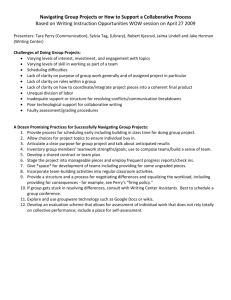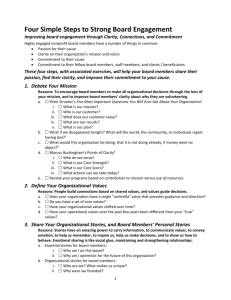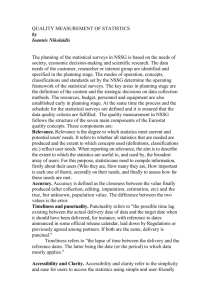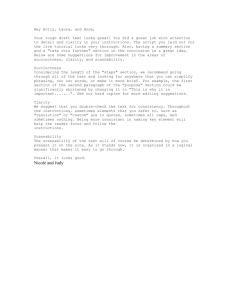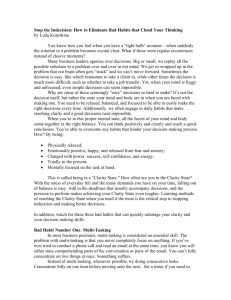Four Principles of Conceptual Design
advertisement
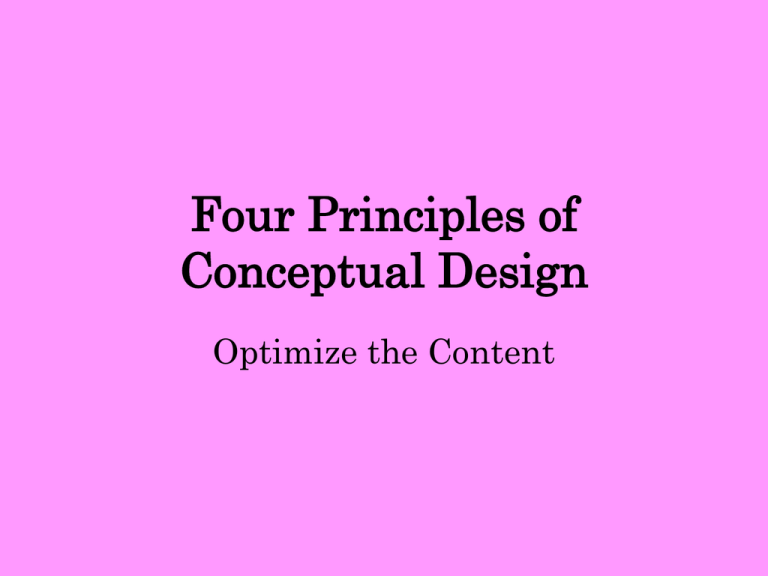
Four Principles of Conceptual Design Optimize the Content Before the visuals … Spend time preparing the content conceptually. Consider the following four (4) principles of conceptual presentation design: Clarity Relevance Animation Plot Clarity Get to the point Simplify Edit Clarity Edit the text Cut superfluous words to make more room to add contrast & make type bigger Condensing the information to its essentials makes it easier to present b/c you can use the slides as quick reference points Clarity Avoid lengthy complete sentences Do NOT present your notes Clarity Write in the active voice Active writing is more dynamic & uses fewer words “The office microwave was blown up by someone” is passive. “George blew up the microwave” is active “When a fire is suspected, one can push the Big Red Button” “If you suspect a fire, push the Big Red Button” Clarity Avoid the ’ings (gerunds) Gerunds are those verbs that act as nouns or noun phrases by adding “ing” to them. ’Ings are passive & weak & takes more words to use ’ings. “Do you mind my asking?” vs. “May I ask?” “We will be seeing a drop in sales next week,” vs. “Sales will drop next week.” “You’re going to make my day,” vs. “Make my day.” Relevance Relate ideas & graphics to your topic, as well as to your audience Get rid of superfluous stuff Relevance Choose a background that complements your talk, one that is relevant to it, not a background that contradicts or confuses it. Work with the background – don’t just randomly pile stuff on it. Animation Use relevant animation & transitions to clarify & enhance. Plot Tell a story Define your objective and know how you are going to get there

